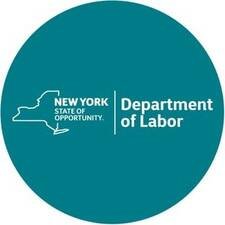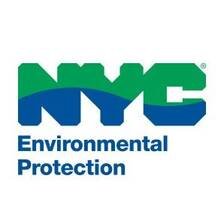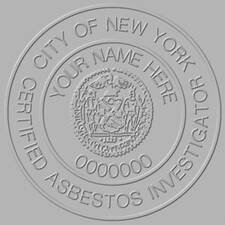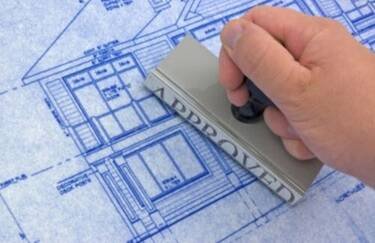Asbestos Testing & ACP5 forms
It is tough to choose a good consulting company and we are honored that our commitment to customer service has meant great reviews from those that we have done work for.
When you hire MKM to perform an asbestos test or air sample with, you are choosing a family-owned, fully insured, licensed, and experienced consulting company.
We are happy to answer all your questions and take bookings by phone.
FOR A FREE ESTIMATE

We are licensed by the New York City Department of Environmental Protection and the New York State Department of Labor to perform Asbestos testing and, if applicable, issue an ACP 5 form. In 90% of the cases, you will receive your report in 24h!

Only individuals certified as asbestos investigators by the NYC Department of Environmental Protection can engage in building survey and hazard assessment for asbestos. Such individuals have satisfactorily demonstrated an ability to identify the presence and evaluate the condition of asbestos in buildings or structures.

ACP5 Forms are required by the city of New York for any renovation, demolition, construction project. Any time a material which is considered PACM (Presumed Asbestos Containing Material) will be disturbed, a certified asbestos investigator must perform asbestos testing.
Asbestos Investigators & Asbestos Testing
Only persons certified by the New York City Department of Environmental Protection (NYC DEP) as Asbestos Investigators or by the New York State Department of Labor (NYS DOL) as asbestos inspectors may select and collect bulk samples for analysis.
The investigator may assume that some or all of the areas investigated contain Asbestos, and for each area that is not assumed to contain Asbestos, collect and submit bulk samples for analysis. Bulk sample analysis must be performed by laboratories within the Environmental Laboratory Approval Program (ELAP) administered by the New York State Department of Health.
Did You Know?
Some Vermiculite products, widely used in insulation applications, may also contain Asbestos.
Asbestos Assessment Report
If the building (or portions thereof) affected by the work are free of asbestos-containing material or the amount of ACM to be abated constitutes a minor project, an asbestos assessment report (Form ACP-5) completed, signed, and sealed by a DEP-certified asbestos investigator, shall be submitted to DEP prior to construction document approval and to any amendment of the construction document approval which increases the scope of the project to include (a) work area(s) not previously covered.

All forms must have the seal of the NYC DEP Certified Asbestos Investigator.

The legend at the top of the outer band shall read “City of New York” and the bottom “Certified Asbestos Investigator”. In the inner circle above the great seal of the City of New York shall be shown the name of the certified asbestos investigator
FAQ
If asbestos abatement is required, the building owner needs to hire a licensed abatement contractor to remove the asbestos-containing material, and an independent air-monitoring firm to monitor the work.
If the abatement requires related construction activity in order to access asbestos containing material or, through the course of abatement, means of egress or fire protection systems are compromised, then construction documents describing the project must be submitted to A-TRU for review and approval. An A-TRU permit must be obtained prior to commencing the abatement work.
Once abatement work is completed, applicants must obtain from DEP:
ACP 20 Asbestos Project Conditional Completion Form or
ACP 21 Asbestos Project Completion Form
The ACP20 or ACP21 must be submitted to the Department of Buildings before a DOB permit may be issued for any subsequent work.
Asbestos testing involves physical sampling of suspect asbestos containing materials which are everything except wood, metal, plastics and fiberglass.
Building owners contemplating renovation, alteration, or demolition are responsible for determining whether asbestos containing material is present in any areas that will be affected by the work. An asbestos investigator can determine whether any asbestos must be abated before work can begin. Owners must demonstrate to the Department of Buildings that requirements for asbestos abatement have been satisfied before a DOB permit may be issued. (source: NYC DOB)
If the lab results of samples collected during the survey indicate there is no asbestos in any of the materials found, or if the asbestos counting materials are below 10 square feet/25 linear feet, the licensed NYC Asbestos Investigator will issue an ACP5 form
Completed Abatement Work.
Once abatement work is completed, applicants must obtain from DEP:
ACP 20 Asbestos Project Conditional Completion Form or
ACP 21 Asbestos Project Completion Form
The ACP20 or ACP21 must be submitted to the Department of Buildings before a DOB permit may be issued for any subsequent work.
Asbestos air sampling or monitoring describes the process of checking the air quality on an ongoing and regular basis during asbestos abatement works, as required by law in NYC.
Project air sampling shall be conducted daily for the full work shift for large projects, until satisfactory clearance air results have been obtained for the regulated abatement work area. If more than one daily work shift is required to accomplish the work, air sampling shall be performed on each work shift. Air sampling is not required on days when there are no Phase II C activities.
(1) Number and location of samples — large asbestos projects. A minimum of five samples shall be taken on a daily basis. The location of samples to be taken are the same as specified for Phases II A and II B. (See section 56-7.1 and Table 2 within section 56-4.9 of this Part.)
(2) Work stoppage criteria during Phase II C abatement procedures. If air samples collected outside the regulated abatement work area, indicate airborne fiber concentrations at or above 0.01 fibers per cubic centimeter, or the established background level, whichever is greater, work shall stop immediately for inspection and repair of barriers and negative air ventilation systems as necessary. Clean up of surfaces outside of the regulated abatement work area using HEPA-vacuums and wet-cleaning methods shall be performed prior to resumption of abatement activities. A summary of the elevated results, clean up activities, the results of barrier and negative air system inspections including any necessary repairs, shall be documented in the supervisor’s daily project log. Work methods shall be altered accordingly to reduce fiber concentrations to acceptable levels.
* Info quoted from here
For any further queries or needs regarding Asbestos Air Sampling, please contact us here at MKM Environmental.
An asbestos test must be completed by a certified Asbestos Inspector/Investigator whenever all or part of a building or structure will be demolished, renovated, remodeled or repaired. The survey will determine if the planned work will disturb asbestos material and an asbestos investigator can determine whether any asbestos must be abated before work can begin
Asbestos is a serious issue when it comes to homes, mainly because it is considered a dangerous carcinogen. Many people have gotten sick and died due to exposure to asbestos, which was commonly used as building material back in the day. It can reside in the piping and walls of various buildings. As a result, Asbestos inspectors have come forward to help alleviate and fix the problem. So what are they? What do they do? And what exactly is an ACP5 Form?
ACP5 forms are a form that is required by New York in order to work on any building. This includes demolitions, renovations, and everything in between. In other words, every time that a building or material that is suspected of having Asbestos is supposed to be destroyed, an investigation is required. The ACP5 form simply states that the investigation happened and that no asbestos was found.
For instance, anything that is not wood or fiberglass can be considered to have asbestos. Such as roofing materials, mortar for bricks, floor tiles, drywall, insulation, and dozens and dozens more materials. The amount of dangers are endless, so if you suspect that you might have asbestos, you need to contact a New York Asbestos Investigator. They need to be certified by the state, and they need to work to ensure that asbestos does not become airborne.
The Department of Environmental Protection trains and certifies Asbestos Investigators. You should definitely check the credentials for anyone that you hire, because if they are not certified by the Department of Environmental Protection, they cannot fill out a ACP5 form.
They need to find out if certain materials is made using asbestos. Even if you do not think that your building has asbestos, it is still important to get it inspected anyways. In fact, it is against the law not to have an inspection, even if you only had a slight inkling that your walls might be contaminated with asbestos. Asbestos inspectors do this in a safe way with minimal risk for the asbestos becoming airborne.
The first thing that will happen is that an investigator will come to the site, and do both a visual inspection, as well as a sampling of the materials. If there no asbestos is found within 10 square feet, or 25 linear feet, than they will be able to sign a ACP5 form, which will allow you to be able to demolish or renovate the building or your home. However, if some is found, an abatement will have to be done by an Asbestos Abatement contractor.
Asbestos investigator compliance guide
The Department of Environmental Protection (DEP) periodically schedules audits of record keeping by certified asbestos investigators. Audit inspections are performed randomly or may be triggered by the Asbestos Assessment Report (ACP5) review process or by enforcement investigations at specific sites. Investigators must make records available during normal business hours without cost or restriction for inspection by a representative of the Department. Incomplete records, improper or inadequate surveys or assessments, or submittal of false statement or false documentation to the Department will result in the issuance of Notices of Violation. The penalties for violation of Title 15, Chapter 1 of the Rules of the City of New York range from $1,200 to $10,000 per infraction. In addition, the Department may convene a hearing to revoke or suspend certification. Asbestos survey records must accurately reflect the site conditions at the time of investigation. However Investigators must ensure that there are no underlying suspect materials e.g. Sub-roof, sub-layer of siding, shingles, etc. Only individuals certified as asbestos investigators by the Department can engage in building survey and hazard assessment for asbestos. Such individuals have satisfactorily demonstrated an ability to identify the presence and evaluate the condition of asbestos in buildings or structures. A non-certified individual may participate in an asbestos survey being conducted by a NYC certified investigator only if such individual works in the presence of the investigator and under direct and continuing supervision.
Sampling (of material suspected of containing asbestos)
Only persons certified by the Department as asbestos investigators or by the New York State Department of Labor (NYS DOL) as asbestos inspectors may select and collect bulk samples for analysis. The investigator may assume that some or all of the areas investigated contain ACM, and for each area that is not assumed to contain ACM, collect and submit bulk samples for analysis. Collection and submittal of samples must be in compliance with Title 15, Chapter 1 of the Rules of the City of New York §1-36, §1-37, and §1-44, and EPA publications 560/5-85-024, 560/5-85-030A and 40 CFR Part 763.86. Bulk sample analysis (PLM) must be performed by laboratories within the Environmental Laboratory Approval Program (ELAP) administered by the New York State Department of Health. Bulk samples must be taken by whatever method necessary to minimize the potential for fiber release. Any material that remains exposed as a result of the sampling procedure must be sealed. Sampling results/reports must be submitted directly to the Department upon request within five calendar days. Note: When samples cannot be obtained because surfacing material is not present (e.g. bare boiler, pipe, etc.), photographs should be taken and included in the records.
ACP5 forms are notification forms and are not survey reports. Investigators must maintain adequate backup documentation. A detailed survey report is required for each and every asbestos survey. Asbestos investigators must maintain a permanent record (survey report) for every building survey/hazard assessment for asbestos. For each building or structure survey/hazard assessment conducted prior to preparation of either Asbestos Notification Form (ACP7) or ACP5, the investigator must compile a record that includes at a minimum:
1. A survey report that reflects the condition of the work area at the time of the investigator’s inspection. The report is to include, at a minimum, the building or structure’s address and the name and address of the building owner, as well as the locations, quantities, and condition of all building materials in the affected portion(s) of the building or structure relative to the asbestos containing material (ACM) contained therein; and
2. A blueprint, diagram, drawing, or written description of each building, structure or portion thereof inspected by the investigator that identifies clearly each location and approximate linear or square footage of any area where material was sampled for ACM, and the exact locations where bulk samples were collected, the date of collection, and location of any areas assumed to have ACM; and
3. The printed name and signature of any and all persons who collect bulk samples for the purpose of determining the presence of ACM, a copy of the current DEP asbestos handler certificate and NYSDOL asbestos handler certificate of each such person, the name of the firm performing the survey and a copy of its current NYSDOL asbestos handling license, the name and address of the laboratory analyzing the samples, the date of analysis, the results of the analysis, the method of analysis and the name and signature of the person performing the analysis; and
4. A detailed written description of any proposed demolition, renovation, alteration or modification work to be performed, including the techniques to be used and a description of affected facility components; and
5. A chain of custody for all bulk samples collected as part of the survey
It is a not-so-well-known fact that the Asbestos industry was actually born in New York in the 1850s when the Johns-Manville Corporation began producing construction materials which contained Asbestos. This led to New York becoming a city with an inordinately high prevalence of Asbestos in its buildings when compared to other cities.
In more recent times, the ever changing skyline of the city has often required large asbestos abatement efforts to control the issue. It is therefore always prudent for anyone who is working on construction or refurbishment to ensure that the regulations are followed and no chances are taken. Given that testing is a relatively quick and efficient process, there is absolutely no reason not to, and besides – it’s the law.
Asbestos Testing in Brooklyn
Brooklyn, like most of New York, is a busy metropolis which has a constantly changing skyline as buildings change and regeneration of older neighborhoods take place. Being the most populated borough of New York, there is always construction taking place and it is vital that whenever you are responsible, that you ensure you take the necessary steps to protect the people working there and living in the area by having an asbestos test performed.
Asbestos testing in Queens
Like Brooklyn, Queens is another borough of New York which undergoes extensive and ongoing upgrades and reconstruction. Coupled with the fact that many buildings are from the 1940s and before, every precaution must be taken as the probability of there being Asbestos present is extremely high, so schedule asbestos testing as soon as possible.

